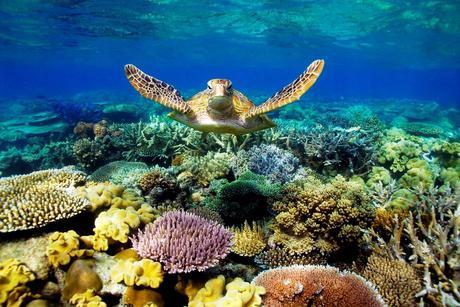
The world is filled with spectacular sights just waiting for you to discover them. But don't delay too long before taking that trip, since some of the most impressive natural wonders are in danger of disappearing forever. Global warming, deforestation and the ever-expanding human population are changing the face of the earth. Coastlines are slowly eroding, rainforests are shrinking, and the underwater world is dying off. If you're a healthy traveler with a passion for the environment, add these destinations to your must-see list.
The Great Barrier Reef
Last year, Outside Magazine posted an obituary for The Great Barrier Reef in Australia, lamenting the death of this natural wonder after more than 25 million years. And in fact, the reef does seem to be on life support after suffering at the hands of global warming and ocean acidification that has killed off almost half of the corals that make up the reef. Sadly, over 60 percent of the coral deaths have happened in the last 20 years. However, there is still hope for the reef and the Australian and Queensland governments have dedicated $2 billion toward the recovery effort. If you visit, choose tour operators who are eco-certified. They'll help you enjoy the reef responsibly.

The Maldives
The Maldives in the Indian Ocean are known for their pristine beaches and spectacularly colorful coral reefs. The reefs themselves are suffering from many of the same problems plaguing The Great Barrier Reef. However, the bigger problem is that most of the country's 200 inhabited islands may soon be underwater due to rising sea levels caused by global warming. It's gotten so bad that the president of The Maldives has announced plans to buy land in neighboring India, Sri Lanka, and Australia where residents can live if their homes become uninhabitable. Visiting The Maldives helps, since your tourist dollars go into a fund to purchase this new land.

Madagascar Rain Forest
Ring-tailed lemurs, flying foxes, geckos and tomato frogs - the Madagascar rain forest off the coast of Africa are flying, crawling and swimming with species found nowhere else on the planet. In fact, 75 percent of the animals found here are unique to Madagascar. Unfortunately, they are quickly disappearing, many before they're even discovered. These rainforests have dwindled from 120,000 square miles to about 20,000 square miles due to deforestation, wood burning and logging.

Joshua Tree National Park
Joshua Tree National Park is where the Mojave and Colorado desert ecosystems meet. It's filled with coyotes and jackrabbits, pitch-black night skies perfect for stargazing, and of course the eponymous Joshua tree. This unique tree thrives here - and only here - or at least it used to. The recent California drought, which is finally easing, and decades of higher-than-normal average temperatures have taken their toll on the Joshua tree. Ecologists predict that the area where they are able to grow will be reduced by 90 percent in the coming century. Visiting Joshua Tree National Park is a great way to learn about the area and conservation effort. If you go, follow the Leave No Trace principles to reduce the impact of your visit.

If you're looking to explore a destination that may not be around forever, book your trip now. It may inspire you to join the fight to save these natural resources.

